While Mundfish is working on the first DLC for Atomic Heart, we have reached out to the studio’s game design team to chat about some of the title’s elements and mechanics. In an interview with Game World Observer, the devs opened up about making the combat system and bosses, and also discussed some issues related to the open world.
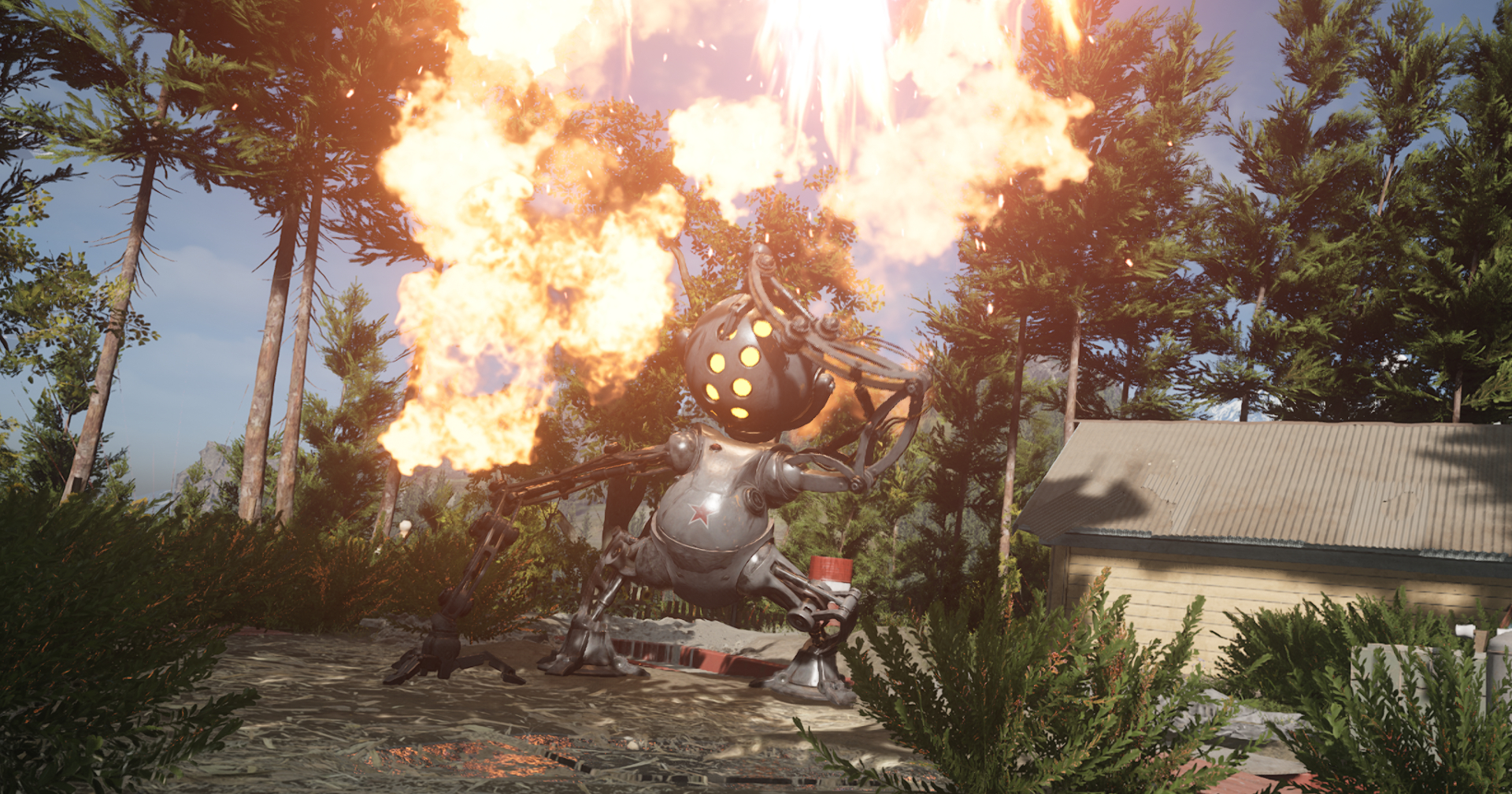
Since the article touches on various game design topics, we decided to attach small explanatory cards to some of the questions. Hope they will help better understand the context even for those who haven’t played Atomic Heart and are not familiar with its gameplay mechanics and structure.
Evgeny Obedkov, managing editor at GWO: Hey guys! For starters, a few gameplay-related questions. Why did you decide to focus on melee combat and make it one of the core mechanics?
Melee combat
- There are several types of melee weapons in Atomic Heart, ranging from the basic fire axe to different blades and maces that can be crafted using blueprints.
- Each weapon has its own stats (damage, attack speed, range, etc.) that can be improved.
- Melee combat is an essential part of the gameplay as you can minimize the use of firearms and still effectively fight most enemies by making the right upgrades.
- Different weapons have unique charged attacks, such as crushing blows or reflex blades, that consume your energy.

Mundfish game design team: From the very beginning of development, we aimed to create a shooter that would be different from other games in the genre. So it was interesting for us to experiment and show familiar mechanics in a new light.
We decided to put melee combat at the forefront to recreate the feel of the Soulslike genre, which we initially looked up to when working on the core mechanics of the game. Hence the concept of save rooms, which is also quite an unusual element for modern first-person games. So we hope that we managed to achieve this goal.
Were there specific projects that inspired the game itself and its combat system?
As we already mentioned, we drew some ideas from the Soulslike genre. We were also inspired by shooters like Doom Eternal. In fact, the list could go on, but we would like to mention Dead Space specifically. Its approach to sound design and music is almost genius.
We really drew a lot of inspiration from this game, especially when working on the Maya Plisetskaya Theater. The theater, by the way, was the very first location we built and tested for the game, and it remained virtually unchanged throughout the entire development.
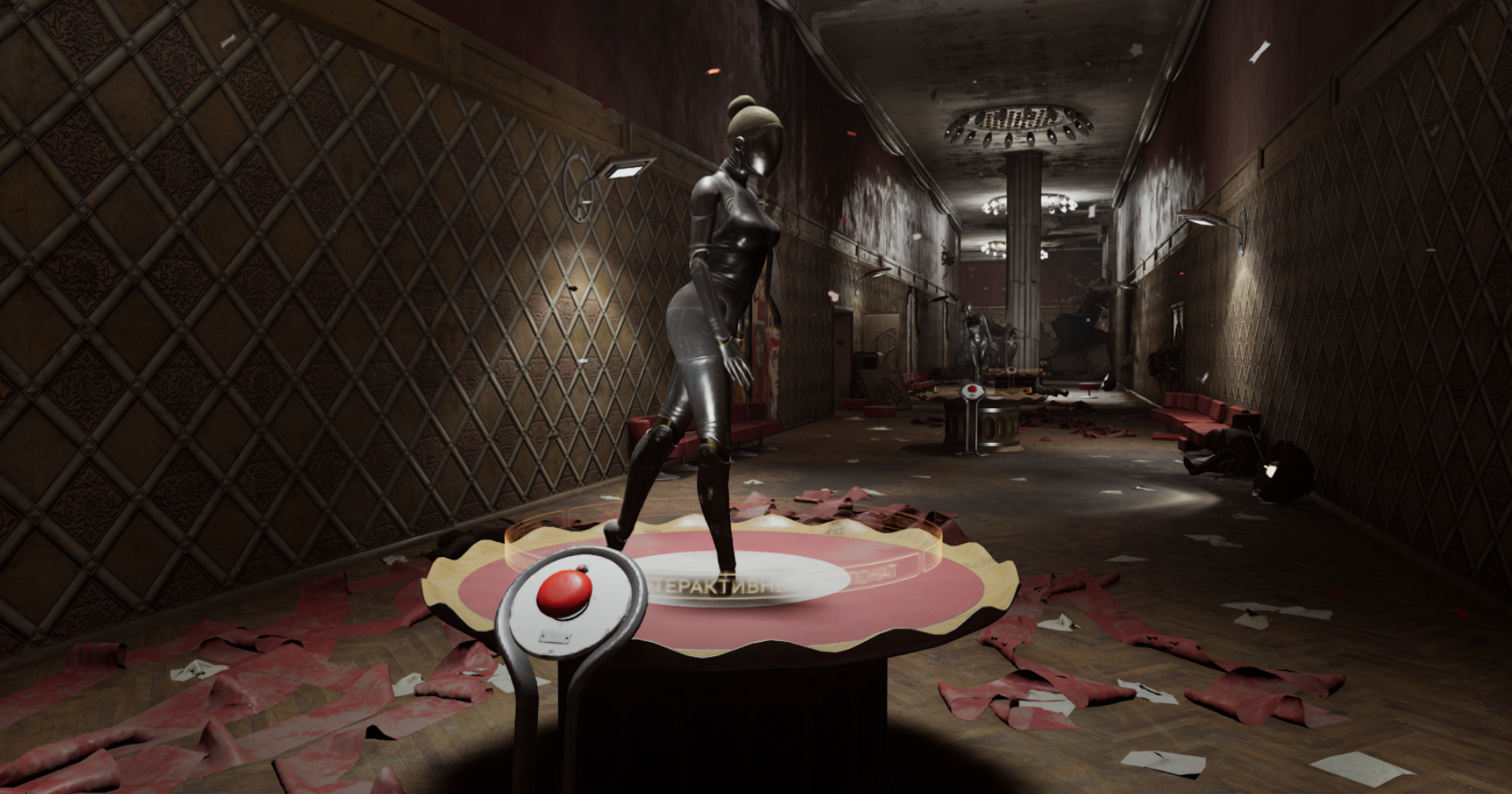
Another integral gameplay element of Atomic Heart are the polymer abilities. Did you initially stick with the set of skills from the final version, or did you have to drop some of them during development?
Polymer abilities
- There are five combat skills in Atomic Heart: Shok, Frostbite, Telekinesis, Polymeric Jet, and Polymeric Shield.
- Each ability has its own skill tree, but only two active skills can be equipped at a time.
- The way abilities are used in combat is quite standard, as each polymer skill is effective against certain enemies and/or gives the player specific advantage in different situations.
- Compared to other games, the Polymeric Jet stands out the most: it sprays a layer of pure polymer that sticks to enemies and surfaces, conducting various types of elemental damage and amplifying their effect.
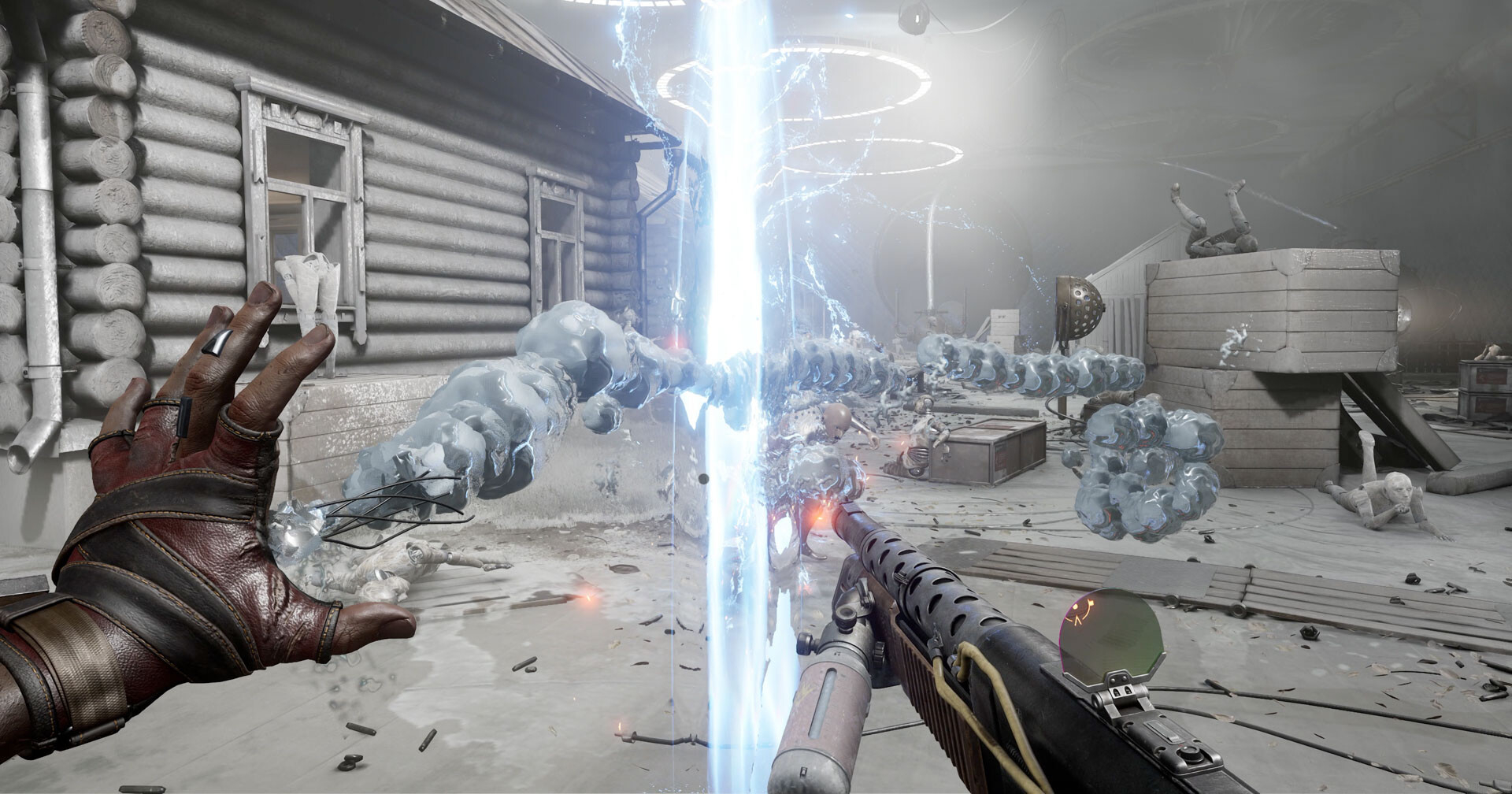
We had a lot of ideas for different abilities for the Polymer Glove over the course of development. But at some point, we realized that we needed to focus on the most interesting of them, the ones that combine with each other the best, in order to deliver at least some of them by the release state.
As a result, we found out that the high dynamics of in-game combat severely limited the buttons available for abilities. For this reason, we decided to focus on an even number of them. But we promise that players will be able to try out some new abilities in the upcoming DLC.
Have you planned to add more combinations of different abilities to improve the interaction of polymer types with each other and make the combat system more varied?
Yeah, sure! But we think the game is already deep enough in terms of various ability combinations, so we decided to stick with the current set of skills.
After all, this is our debut game, and we will definitely expand the number of abilities and their variety in the future, but this time we had to strike a balance between ambition, common sense, and the release date.
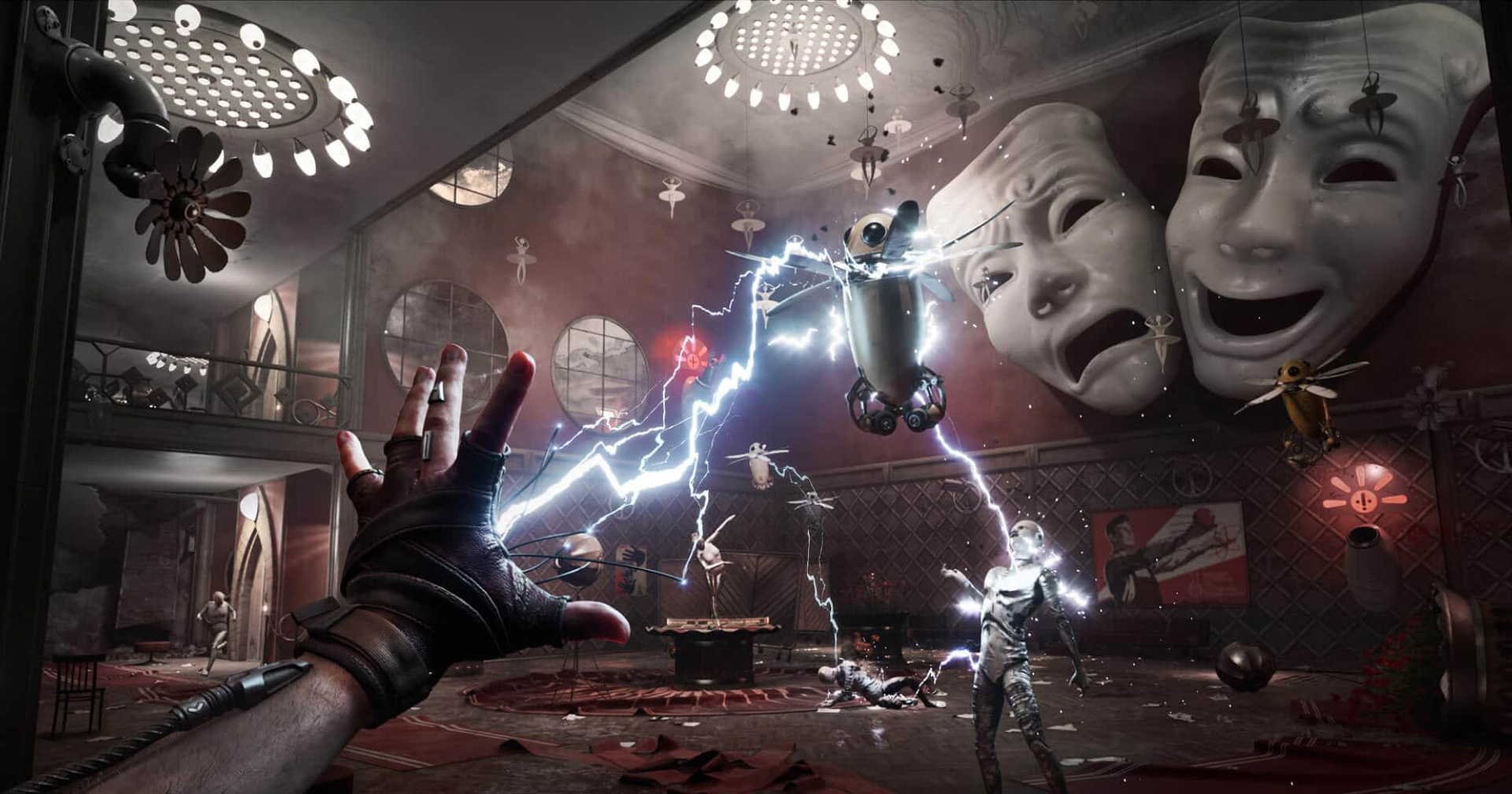
Upgrading weapons and abilities is directly related to collecting resources using the Polymer Glove. At the same time, CHAR-les serves as the player’s companion rather than just a tool, regularly commenting on things and events. How did you come up with this element?
What is CHAR-les?
- The protagonist of Atomic Heart, Major Nechayev (aka P-3), wears a talking polymer glove on his left hand called CHAR-les (Charles) that allows him to interact with the game world.
- For example, the player can scan locations, collect loot, identify objects, and apply polymer-based special abilities.
- Charles also plays an important role in the main story of Atomic Heart, assisting in solving certain gameplay situations and providing details about the story and lore.
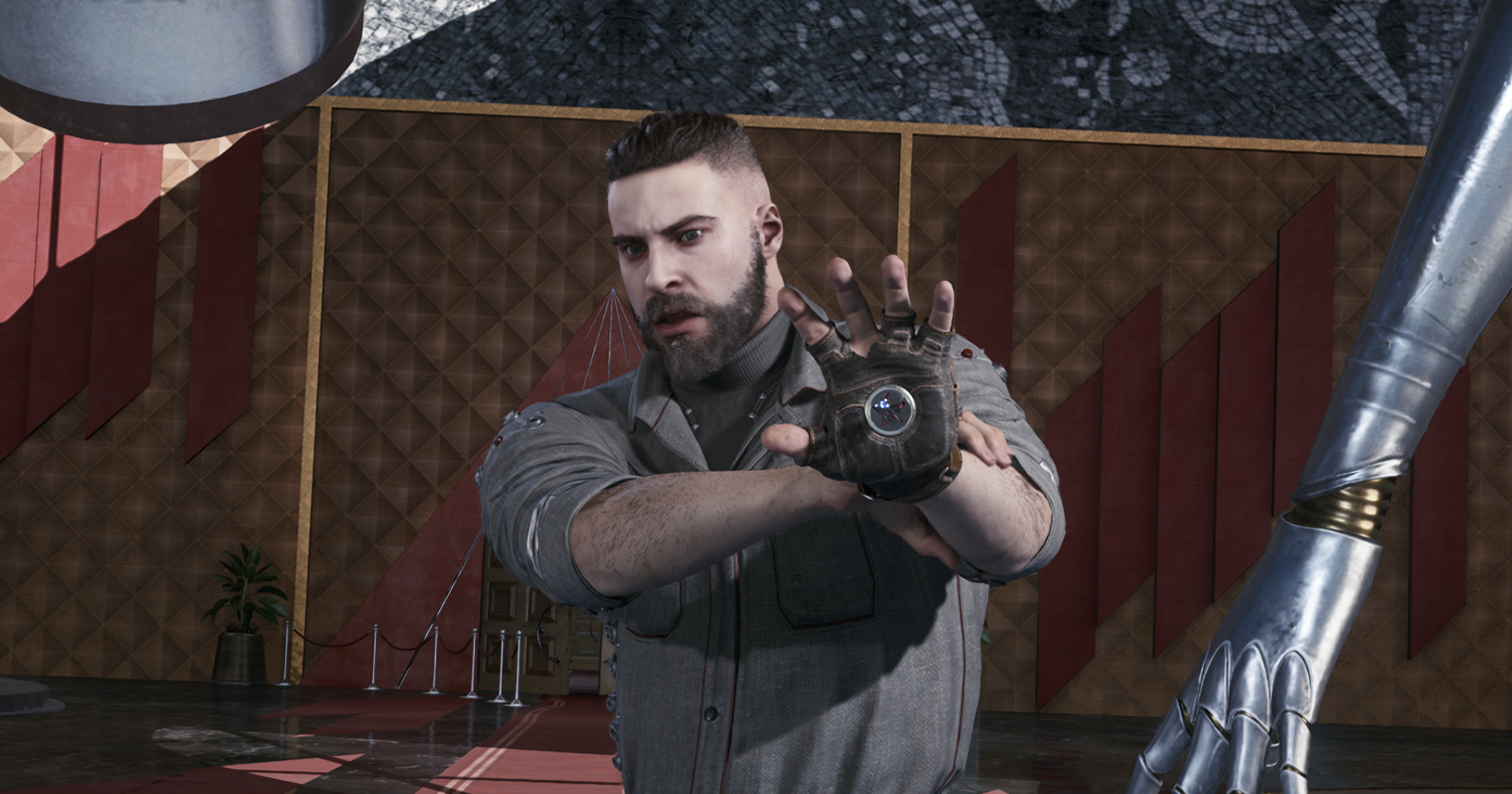
The glove appeared on P-3’s hand back in 2019. It wasn’t part of the early concepts.
For us, 2019, in general, was a really strong year in terms of breakthrough ideas. That’s when we also came up with the first iterations of the Twins and formulated the plot with the beginning and ending.
Speaking of Charles, we wanted to give players some kind of living tool that will always be with them and at the same time won’t be just something magical, like in The Elder Scrolls V: Skyrim, or something genetic, like in BioShock. We wanted our game to still have a technological basis, a scientific foundation, if you like.
First, we designed the glove itself. Then we made a hole in it and decided that it would be star-shaped. When we created a 3D model, someone on the team suggested that the star should be able to open up. It dawned on us that something could come out of this hole, and that’s how we came out with the wires, which eventually turned into Charles’ main tool.
We eventually decided to make the glove a universal device in the world of Atomic Heart, which could be used not only by the Argentum unit, but also by all Sechenov’s combat robots. So the star then appeared on the Twins’ foreheads and in the Thought device. In the game world, everything is interconnected.
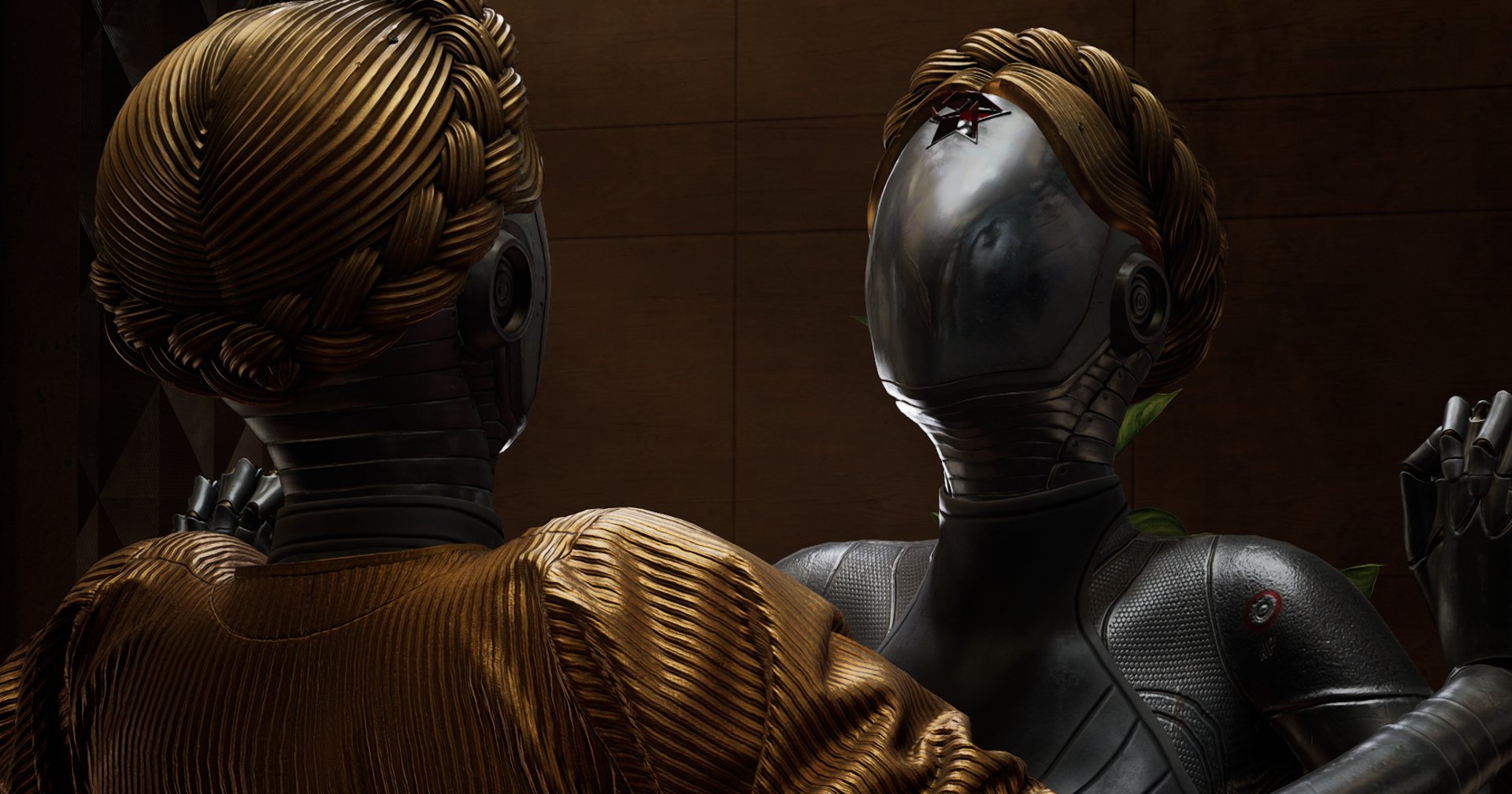
Many players also loved the concept of a glove that “sucks up” all nearby loot. How did you come up with the idea and implement this mechanic?
This idea was relatively spontaneous. While evaluating the telekinesis ability, which allows you to grab, say, a large box, we began to ask ourselves additional questions that followed one after another.
Why can’t telekinesis grab small gear? Indeed, why not? Then why can’t it allow you to drag several pieces at once?
Question after question, we eventually decided to give players the opportunity to collect all the items they want, including loot. Not only does it save time, but it also looks really cool!

Source: Reddit
There are plenty of crafting materials and resources in Atomic Heart. Doesn’t that devalue them? In other words, do you agree that players would rather routinely “suck up” all the loot in the location than meaningfully search for certain types of it?
Resource management
- On locations, players can find different consumables that restore health or give certain buffs, as well as crafting materials and ammo.
- Various resources drop from certain enemies (the menu contains information about this) or are hidden in chests and lockers.
- There are nine types of materials in Atomic Heart, which can be used for upgrading skills and weapons, as well as crafting. All resources collected by the glove are automatically placed in the inventory.
- On top of that, players can refund the crafting cost of skills or any weapon (excluding consumables and ammo) in order, for example, to upgrade other abilities or create another item.
- There is no limit on the amount of collected resources, but you can’t carry all the weapons and an infinite number of consumables or ammo at once. Anything that doesn’t fit in the inventory goes into storage, which can be accessed through the NORA vending machine.

Sure, there are some cases where resources can be devalued, but we didn’t want to make completely empty corridors without loot or, for example, a huge filing cabinet with only one bullet inside. So the number of collectable items and their types began to gradually increase during development.
At the same time, we can’t say that the amount of resources ultimately devalues their overall value because, in fact, many players have still experienced material shortages if they haven’t looted all the nooks and crannies.
While exploring the world, Major Nechayev not only chats with Charles, but also sarcastically comments on the need to search for keys and other items on a regular basis. Sometimes he even seems to voice the player’s thoughts. What was the purpose of this mechanic?
When we played Atomic Heart ourselves, we cursed under our breath all the time. Sometimes it turned out to be so much fun that at some point we wanted to transfer some of the jokes into the game. We decided to test the reaction of people who haven’t yet tried the game and received unexpected feedback — they had a lot of fun with it!
So we subsequently decided to scale this mechanic and apply it to the entire game. In fact, this is more of a narrative approach than a mechanic per se.

What pitfalls did you encounter when implementing this element?
If we take this narrative aspect specifically, the problem is that any joke, even the best one, is funny only once. When you hear it for the hundredth time while checking how certain systems work, it starts feeling inappropriate and stupid.
This is the same problem comedy filmmakers face. At some point, all these jokes not only cease to sound funny, they even make you sad. But this is what professionalism is all about — you have to be confident in yourself and in the final result.
Speaking about the gameplay of Atomic Heart, it is hard not to discuss the bosses. Although each of them can be beaten head-on, they still require different tactics, especially on higher difficulty. Can you elaborate on Mundfish’s approach to boss design?
Bosses
- There are a total of five major bosses in Atomic Heart, apart from three enhanced foes that later become standard enemies.
- Battles with robot bosses usually take place in arenas, and some of them have several phases.
- Each major enemy has its own attack patterns and vulnerabilities, based on which the player must develop their combat tactics and combine different abilities, weapons, and consumables.
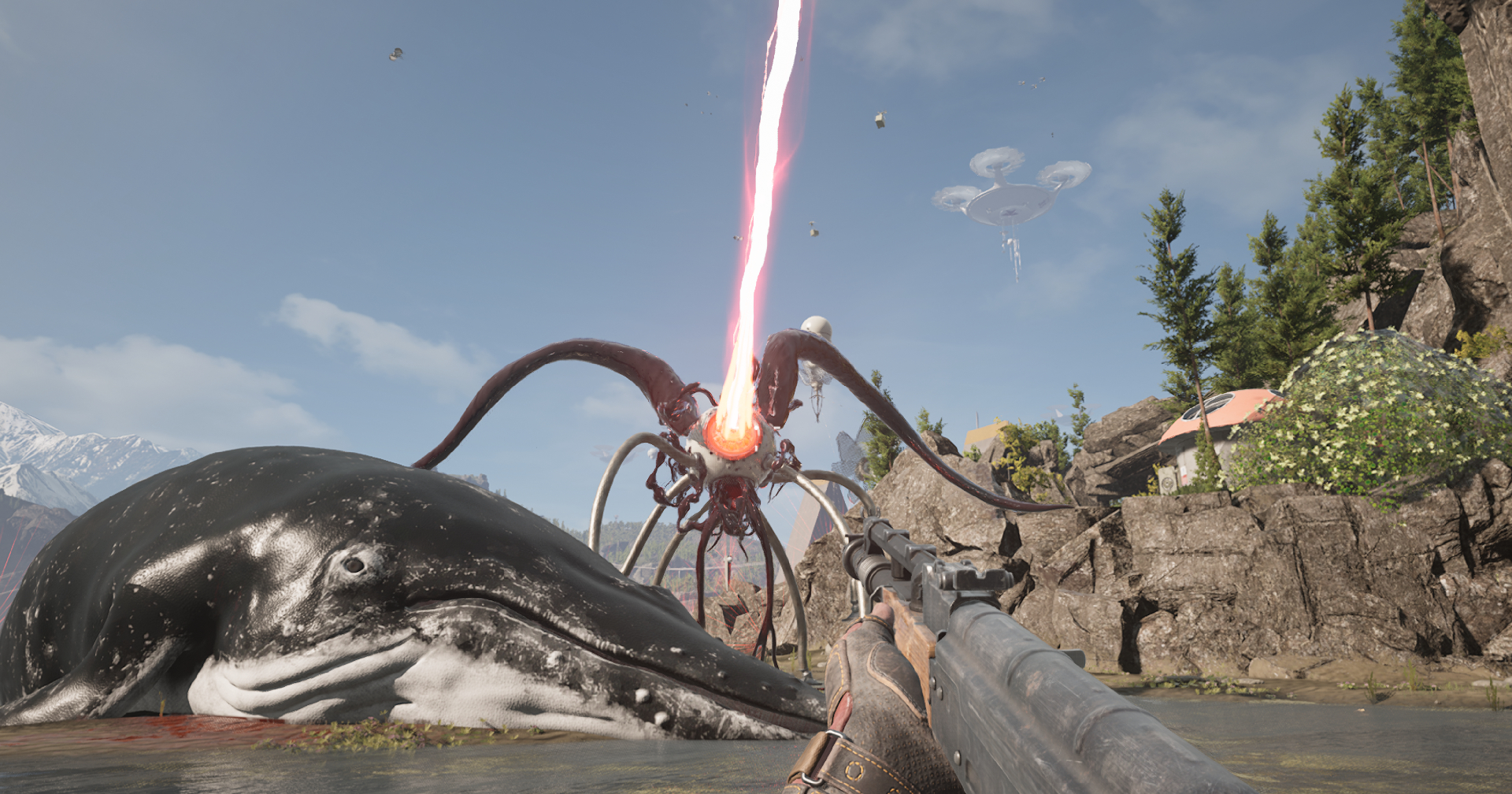
When designing the boss fights, we were primarily inspired by the models created by Artem Galeev [Mundfish’s art creative director, who laid the foundation for Atomic Heart’s visual style] and the first prototype animations for them.
Initially, we aimed to maintain that good old “rounded” Soviet design as much as possible in the images and characters of the robots. The team picked up the animations for each model and infused them with a certain style to breathe life into them. And then we moved on to designing the fights, taking into account all the nuances.
For example, the design of the MA-9 “Belyash” was inspired by an orangutan, and you can clearly see it in the way it acts and behaves in the arena during the battle.
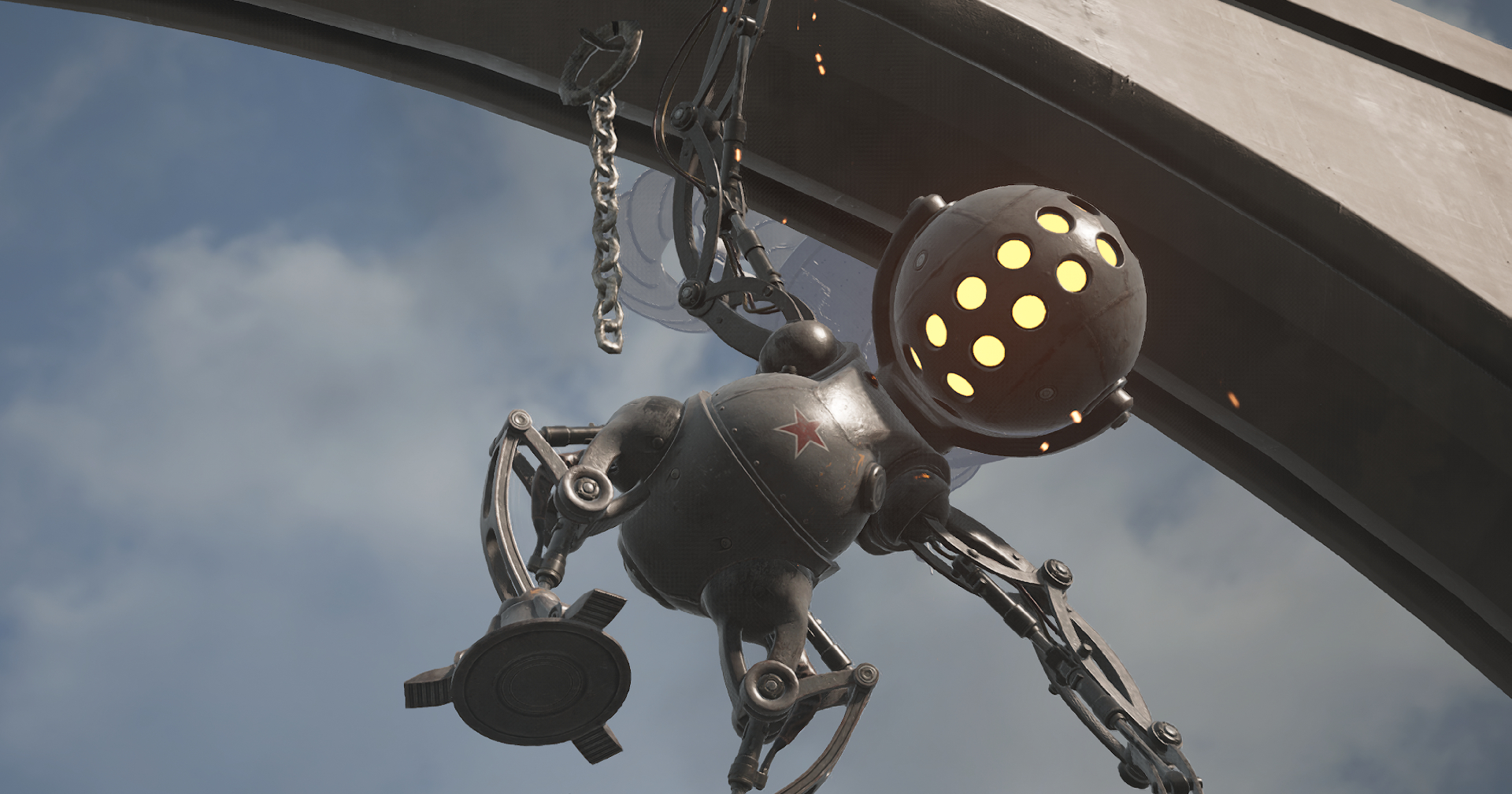
How many iterations did each bossfight usually go through before making it into the final version?
This is a really complex and interesting question. On average, it took us about two months to develop one boss, taking into account the time spent on optimization.
However, we approached each subsequent boss fight with more understanding, thanks to all the experience we gained along the way. The HOG-7 Hedgie fight was the last one we worked on, so it turned out to be the most efficient in terms of development processes.
Maybe I’ll express the “pain” of many players, but was the fight with Burav planned? And if so, why didn’t it make it into the final version of the game?
We think that the fight with Burav seems to fit more into Limbo [the subconscious world the main character occasionally enters throughout the story] than the real world of the game. After all, it’s a tunnel boring machine! And we don’t allow fights in Limbo yet, so that’s the main reason why players haven’t experienced it in the game.
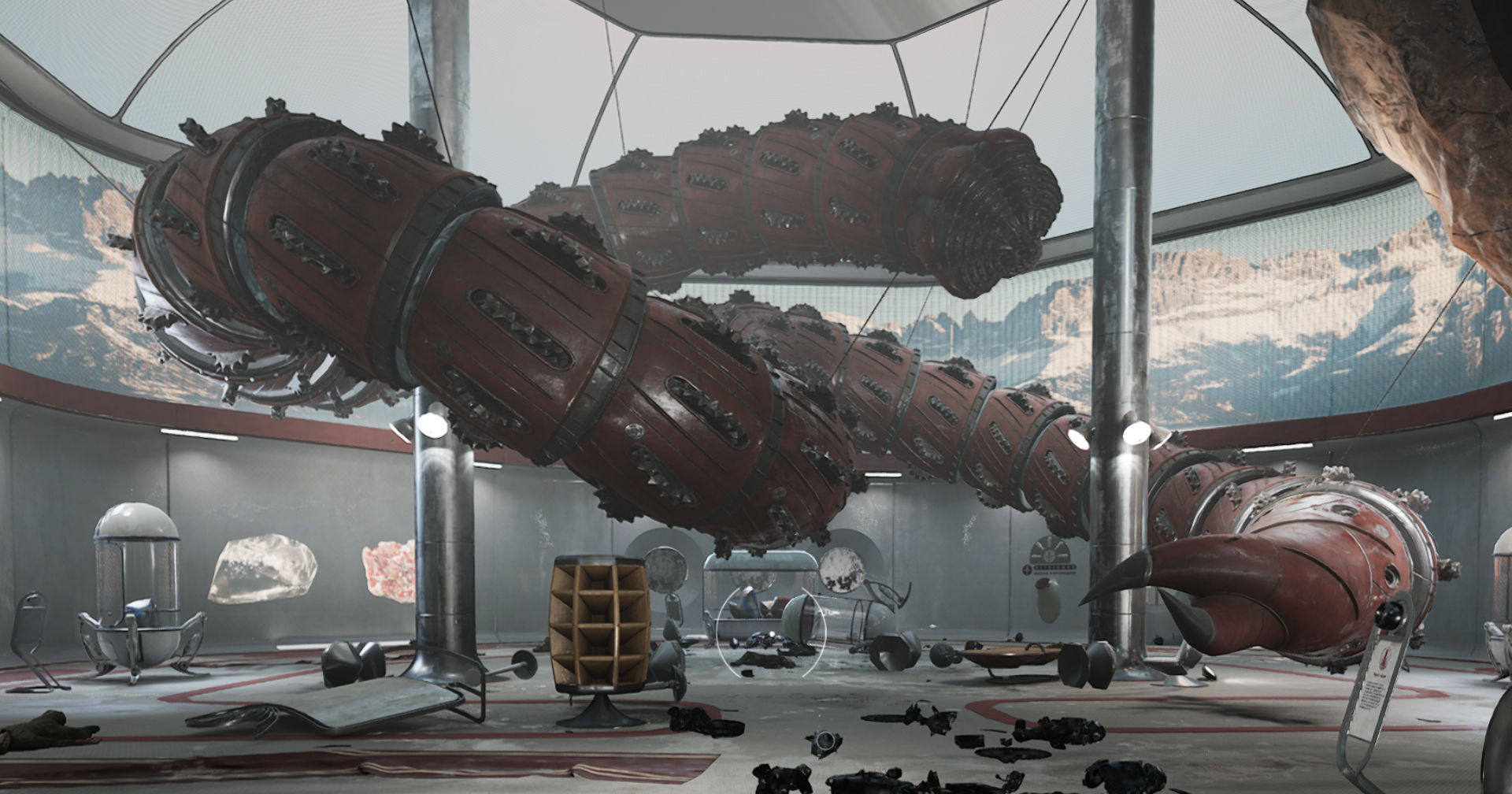
Alright, let’s talk about world exploration. Why did you decide to put such an emphasis on respawning enemies, especially given that you can almost always just run away from them in open locations?
Open world and its structure
- Atomic Heart can be clearly divided into story sections, which usually take place in closed locations, and the Facility 3826 territory, which is open for exploration.
- For most of the time, the player traverses the map on foot. There are also several “Moskvitch” cars located on the map, but their low durability prevents them from serving as a useful vehicle for long distances.
- The main points of interest in the open world are testing grounds. Players can enter them and find some rare materials and unique upgrades after solving puzzles.
- On top of that, the Facility’s territory is full of so-called Dandelion Cameras that detect the player and alert nearby robots, as well as enemies that can be repaired and “revived” by special Pchela drones that arrive on the battleground.
- This concept doesn’t allow you to safely explore the open world or kill all the robots and clear the location forever; you will either have to simply run past enemies from one story point to another, or constantly engage in fights, looking for terminals and hacking cameras to open certain areas and gain access to the testing grounds.
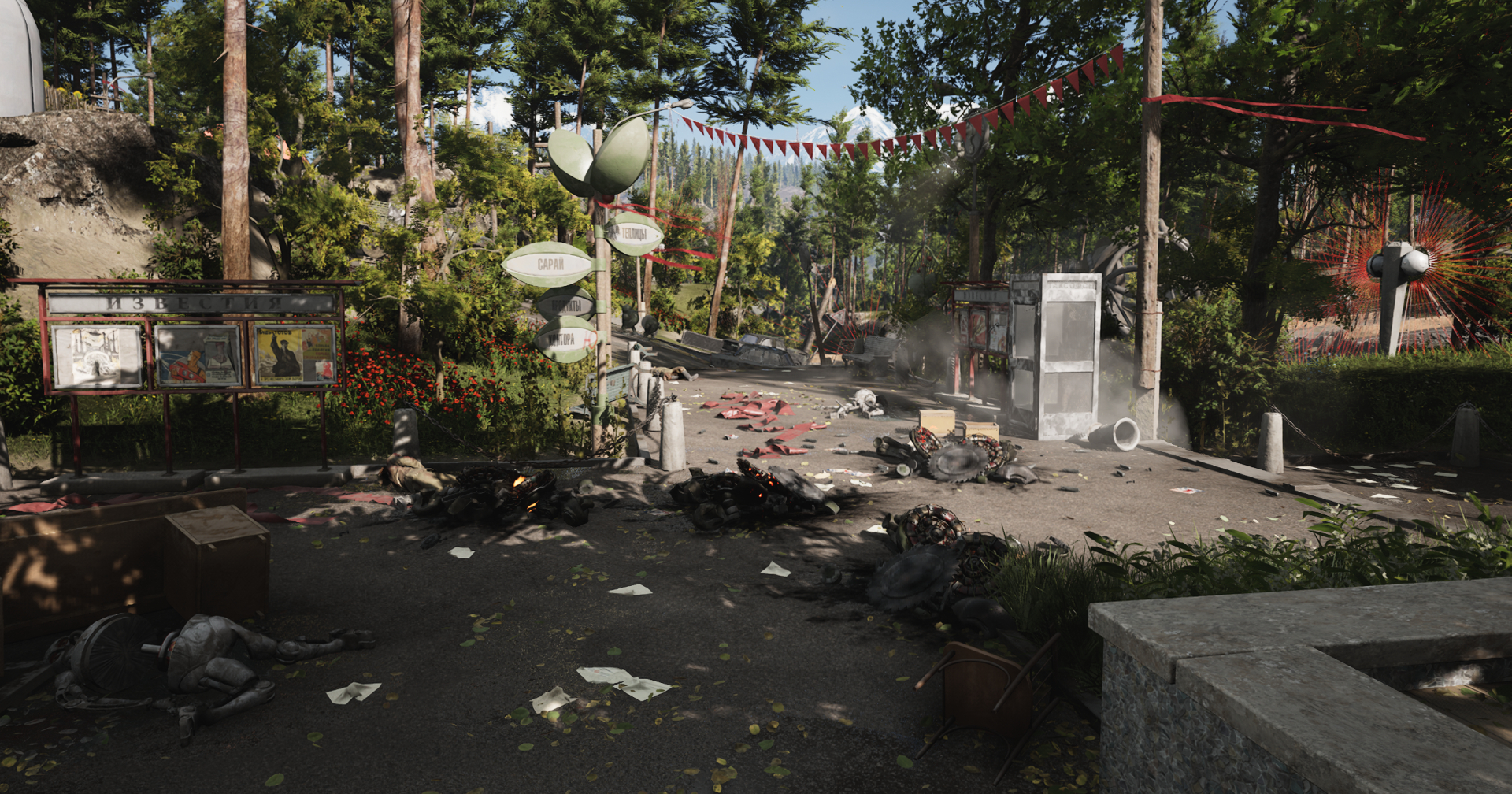
In fact, you can’t always just run away from enemies. Plus, it also makes sense in terms of the game’s lore. It’s one thing when you read the notes, and another when the game is consistent in terms of lore in each and every aspect. So even with this enemy respawn mechanic, your immersion in the world goes to a whole new level.
In the vast majority of games, enemies appear somewhere behind the back, behind the door, or even behind the camera, i.e. where the player can’t even see them. But in Atomic Heart, they just naturally land on the field in a box from the factory, the same one that the player flies past in their car at the very beginning of the game.
Don’t you think that because of this concept, some players may sometimes perceive open locations as mandatory transitions between story points rather than as a full-fledged world they can explore?
It’s hard to say whether this is something good or bad, but we can imagine what it would look like without these mechanics. There is a global collapse of the Kollektiv network, which entailed massive human casualties, and the Major would just calmly walk through the fields and meadows, sniffing flowers and doing side quests.
On the one hand, if we did things that way, there would probably still be players who didn’t like these contradictions in the lore. But on the other hand, these things are the essence of the open world.

So, yeah, such a perception may arise, but it is subjective and makes perfect sense in terms of the lore. Whether this was a good or a bad decision is the question to be asked here. But anyway, we think we just couldn’t have implemented an open world at the level of The Witcher or the Horizon series in our first game.
Again, we deliberately aimed to introduce the mechanics of the Soulslike genre where players tend to just run past common enemies from one boss to another. For those players who want to stay longer, open locations serve as a great way to farm polymer and materials to upgrade abilities and weapons. And those who don’t need it and try to pass by these locations will still feel that the world around them is alive, as the enemies quickly react to the player’s actions.
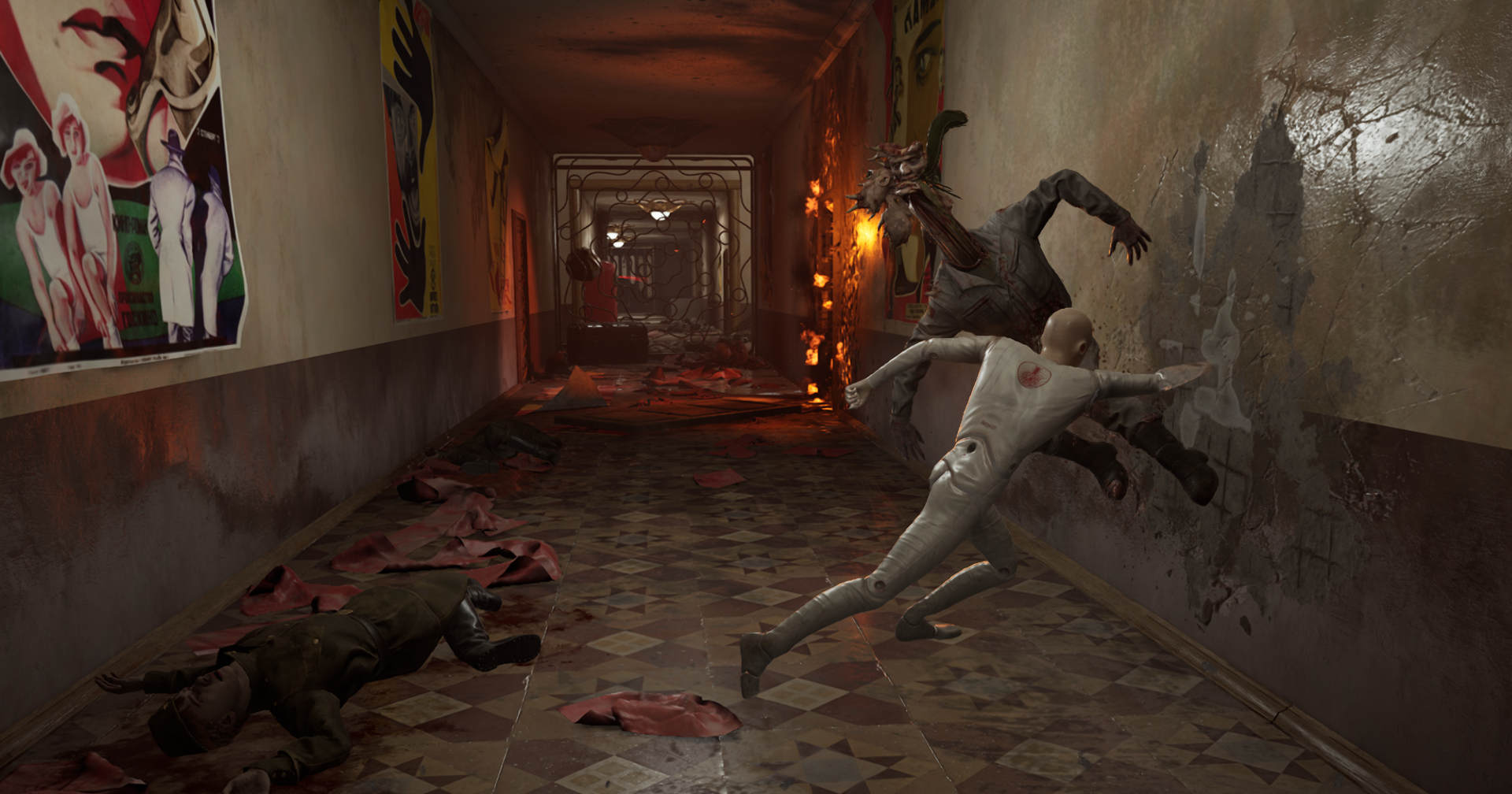
Were you concerned during development that this approach could have a negative impact on player motivation to explore the world of Atomic Heart?
We believe that the game’s world and its lore are deep and consistent enough as is. So we didn’t try to motivate players to crawl into every corner of the open world. That’s why you don’t always find anything of value in such places. We wanted players to determine their own needs.
Let’s see what happens in the sequel as we’re very curious about it ourselves. We have read through absolutely all the feedback, so we’re going to improve what players liked about the game and fix things they didn’t like.
